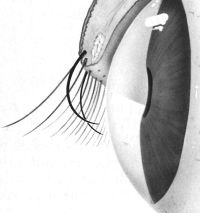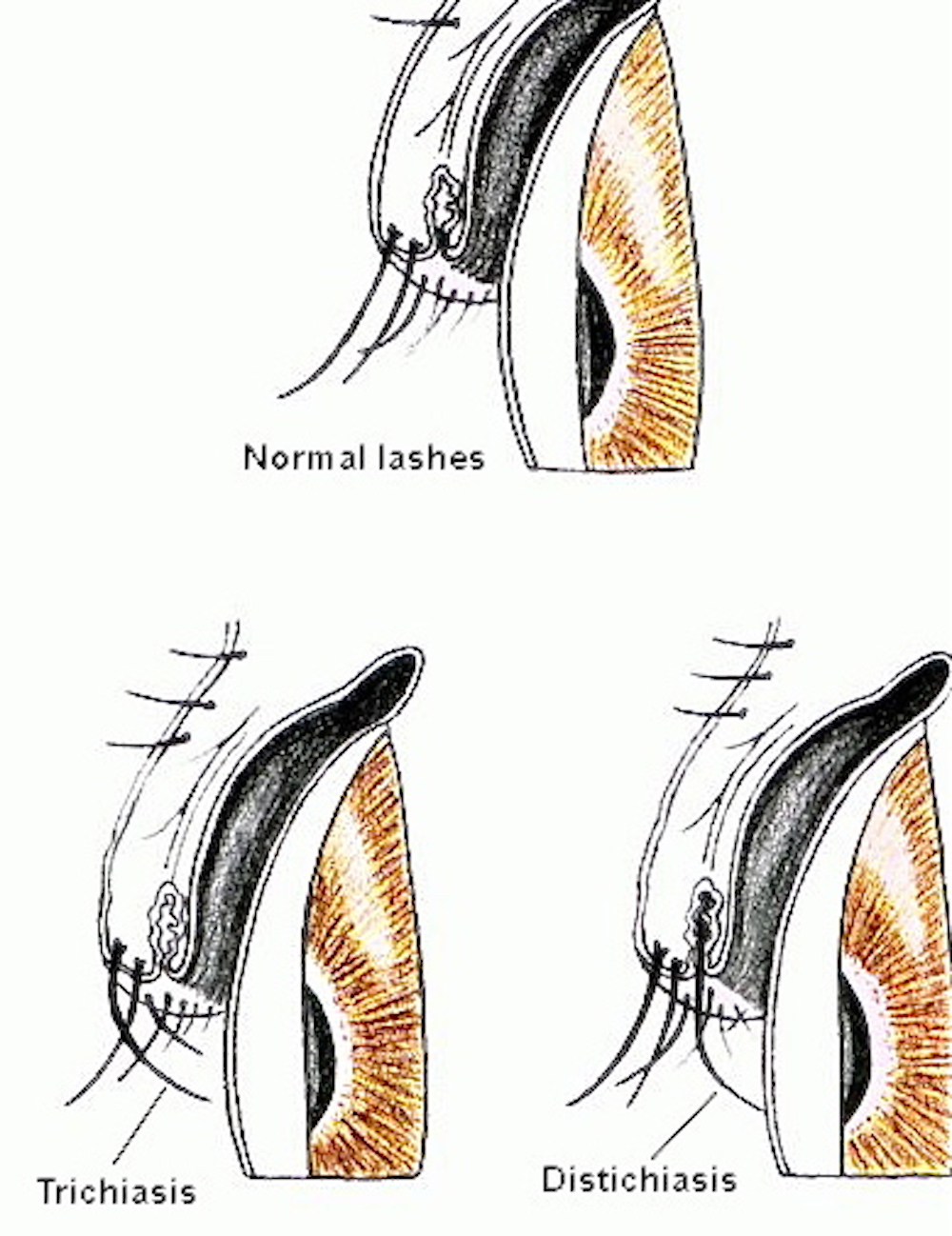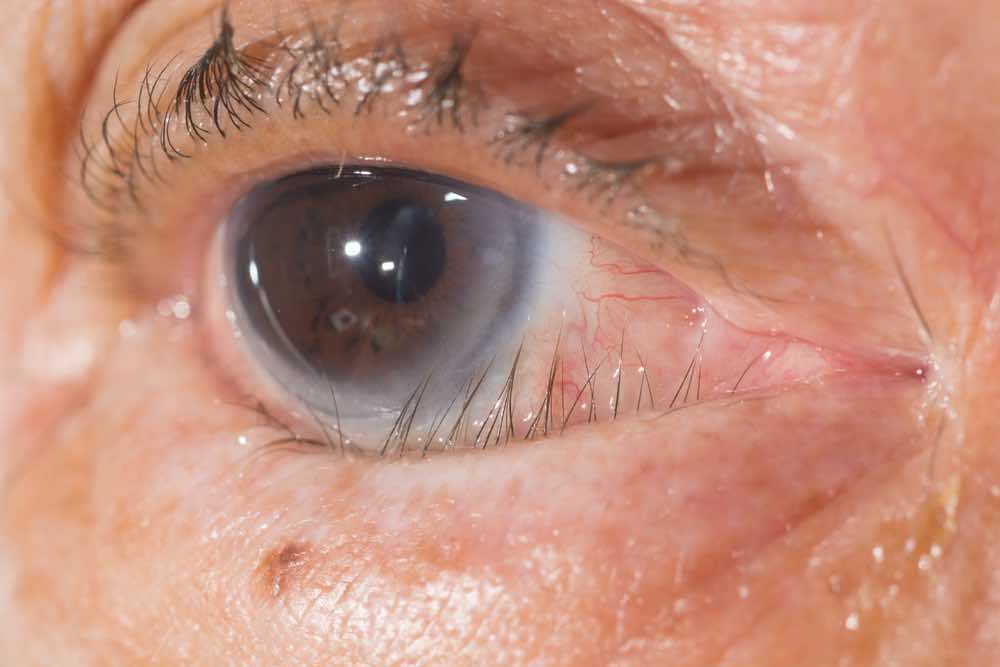Trichiasis
Ingrowing eyelashes | Eyelashes touching eyeball

What is Trichiasis?
The term trichiasis describes the misdirection of eyelashes such that instead of them growing outwards normally, they point inwards and touch the eyeball causing irritation, watering and discomfort
What causes Trichiasis?
There are several ways in which trichiasis can result.
- In the UK, the commonest cause of trichiasis is marginal entropion. This is where the hair bearing skin of the edge of the eyelid, has migrated towards ocular surface. Looking from the side, the edge of the eyelid is seen to rotate slightly inwards causing the eyelashes to start pointing inwards, touching and abrading the cornea. This is quite commonly due to blepharitis or meibomian gland disease, a condition characterised by chronic inflammation of the eyelid margins which in turn causes scarring of the edge of the eyelid. This continual scarring results in migration of the eyelid marginal skin. Marginal entropion is more common in the elderly due to age related weakening of some of the stabilising tendons that keep the eyelid skin in check.
- The commonest cause of trichiasis worldwide is trachoma, a chronic scarring type of infectious bacterial conjunctivitis spread by direct contact and flies.
- Trichiasis can also arise from a rare condition called distichiasis, where an extra row of eyelashes is present. These extra eyelashes may grow inwards and also rub against the eyeball.
- Injury to the eyelid can cause trichiasis, especially if the eyelid is torn near its margin. If an eyelid wound is allowed to heal in a misaligned position, the eyelashes may start to grow inwards and rub against the eyeball.
- Show More

Symptoms & Signs of Trichiasis?
- Irritation, watering and redness due to ocular irritationIrritation, watering and redness due to ocular irritation
- Photophobia, aversion of bright lights, due to corneal irritation
- Rarely loss of vision which may be permanent may result due to secondary infection of a corneal ulcer
- Show More
